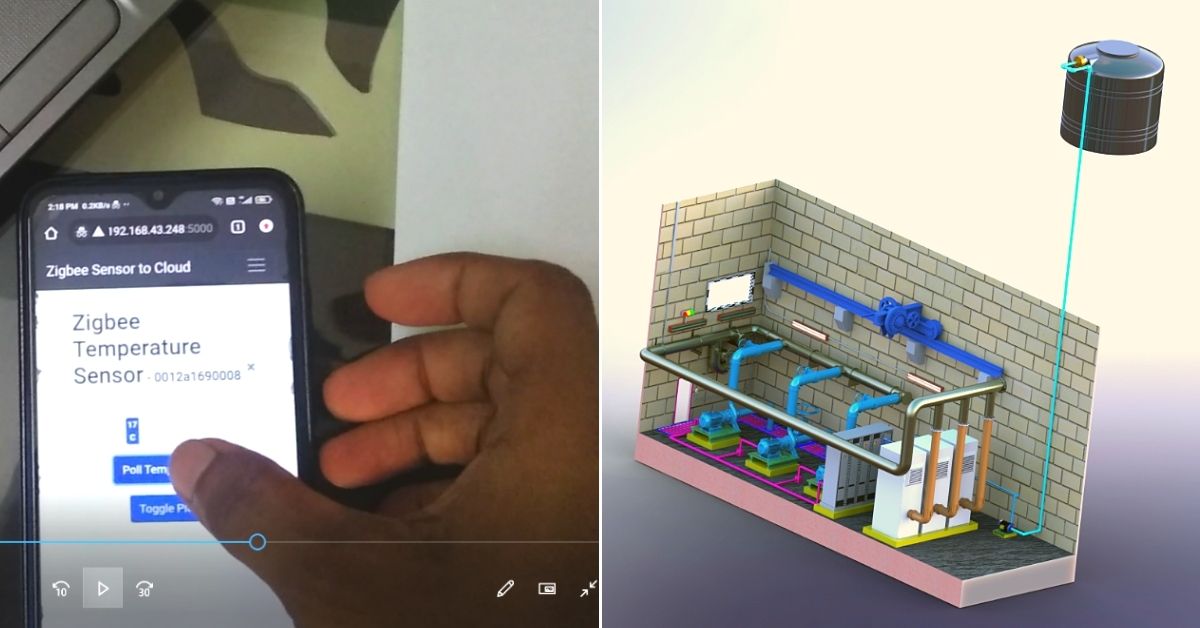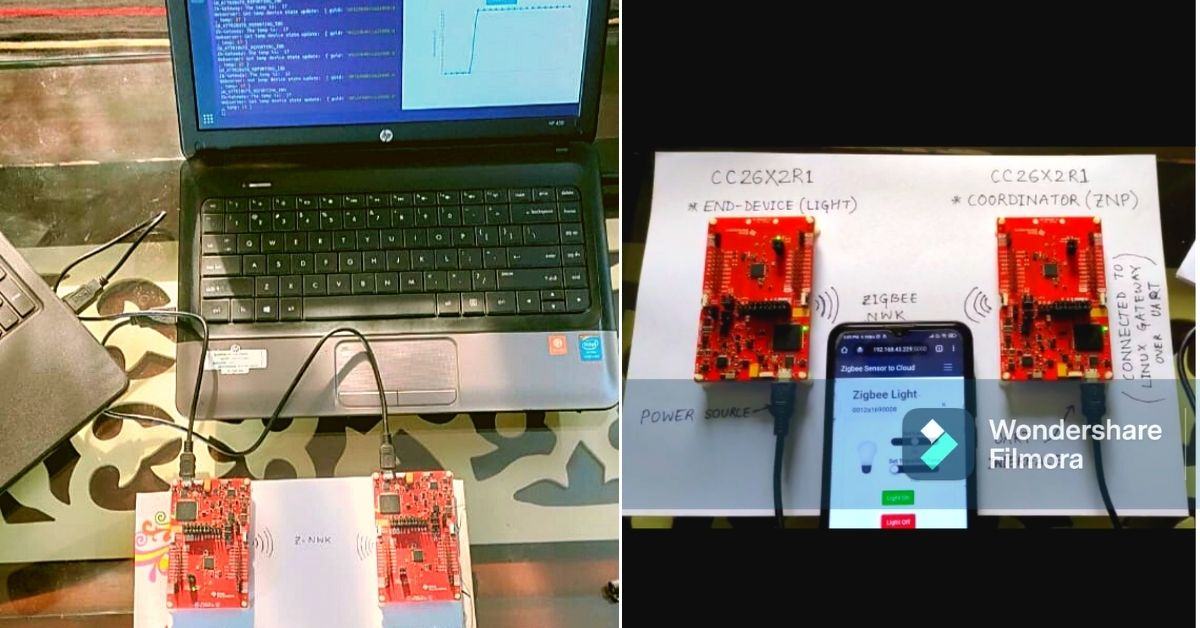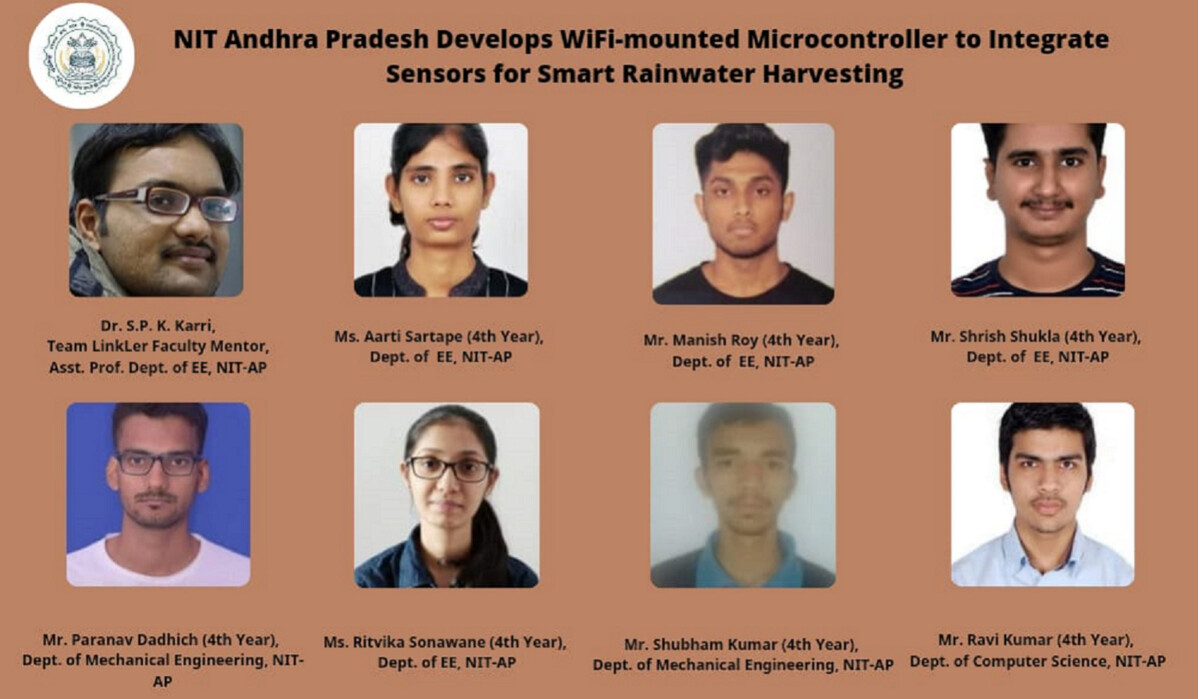NIT Students Build Low-Maintenance, Automated Rainwater Harvesting System
Team LinkLer, comprising students of National Institute of Technology Andhra Pradesh, have developed a 'WiFi mounted microcontroller' that can integrate sensors for smart harvesting of rainwater. This system requires minimal human intervention.

We hear about the importance of harvesting rainwater, but when it comes to implementation, the rhetoric often fails because of the effort required to maintain this system.
However, students of the National Institute of Technology Andhra Pradesh (NIT-AP) have devised a unique solution which follows this rhetoric with innovation and technology. Calling themselves Team LinkLer, the group has developed a ‘Wi-Fi mounted Microcontroller’ that integrates sensors for smart harvesting of rainwater and creates a system which does the job without human intervention.
This system can automate the process of water storage, reduction in water-borne diseases, and efficient storage. Team LinkLer aims to address the problem of water shortage in Indian cities by deploying Deep Tech such as IoT (Internet of Things) and machine learning.
The team has developed an end-to-end Software Stack that provides an easy interface to manage and control in-house water resources. The system monitors wastewater and supply systems such as rainfall recorded, water remaining in the storage tank, water quality index, and water supply in a given area. The students have also designed an underground storage tank with a material capable of holding the water on a long-term basis. The treatment process is monitored on a feedback IoT system.
The system strives to bring autonomy in the entire rain-water harvesting process and overall water utility in one’s home. They integrate tank depth sensors for available water quantity in the main and secondary tank, and use weather patterns for rainfall estimates using machine learning. Further, estimation of storage from rainwater in the additional tank is done in coordination with the main water supply source as well.
“These factors help us maintain a ratio of demand and supply for the algorithm to use. The electronic setup bases the response from the system, triggers different action signals as per the system condition, and allows monitoring of water inlet/outlet through flow meter and relay integration. This approach of a closed and feedback-based monitoring system allows for hygienic conditions and reduces the chance of water borne disease from spillage and stagnation. Varied sensors help monitor the available water quality index. The ratio factor of demand and supply is crucial to ensure a continuous supply to the end user, which we ensure considering the previously listed factors,” says Dr Sri Phani Krishna Karri, Team LinkLer’s faculty mentor and assistant professor at the Department of Electrical Engineering, NIT-AP, in a conversation with The Better India.

Setting it up
There are two versions of this system. One comes with a mechanical tank setup, while the other integrates the microcontroller and flow meter/sensor into the existing supply.The product’s concern is to make users aware of their water usage pattern and make the management process hassle-free. The fact of more “information-based water usage” can drive our concern towards proper addressal of the rising water crisis, the team says.
“The setup and integration of the system are fairly simple with a microcontroller at a few places with switching action and flow meter. The overall system interacts with cloud service through the main Wi-Fi microcontroller and other devices from a Zigbee mesh (a low-cost, low-power, wireless mesh network standard targeted at battery-powered devices in wireless control/monitoring applications), thus interacting and maintaining a coordinated approach. A user has access to individual web-based applications for insights and control. The current aim is to reduce the product footprint size for easier integration and cost reduction. The feature of minimal human intervention and analytical case handling could be huge drivers of product adoption and ease the rainwater harvesting process,” says Dr Karri.
The team has majorly focused on the end-to-end software stack and microcontroller work to automate the process. The tank design and provision are intended to further add to a user’s water availability when need arises, as had been the case during the 2019 water crisis in Chennai. The tank design allows customizability as per user’s requirement.
“Thus, for example, a single household with a 5×5×5 cubic ft pit setup can allow storage up to 3,000 litres, considering the microcontroller casings and functional setup as additional space. The long-term water retention is on the basis of temperature control, low and stacked boundary cooling – the tank aspect is in development work as of now. The USP of the product is the electronic and software resource,” Dr Karri explains.
The system is customisable based on the demand of a household or an entity. The low pricing version of the underground tank would be made of concrete and ceramic boundary. In general, the treatment process is to have a UV lamp to kill microorganism level substances. UV lamps allow lower equipment investment versus other disinfection options.
Simple maintenance (with proper pre-treatment) and sensors would allow quality index measurement and instantiate action. The design system initially seeks to remove physical impurity, and then using UV lamps with further chemical disinfection techniques if in use of non-potable application, else a more refined process for potable use.

From proof-of-concept to product
Team LinkLer won the prestigious ‘India Innovation Challenge Design Contest 2019’ (IICDC), organised by US-based Texas Instruments, and the Department of Science and Technology (DST), Government of India. They are now undergoing Indian Institute of Management Bangalore’s (IIM-B) ‘NSRCEL Technical Program’ to drive the product to the market. This programme extends support for incubation, design and product launch. NSRCEL brings together startups, industry mentors, eminent academicians from its parent institution IIM-Bangalore, and researchers.
“Team LinkLer has moved from idea to prototype stage in this competition and is humbled to have made it to the top 60 finalists among over 18,000 teams across the nation. NSRCEL launchpad is an opportunity for the team to further understand the nitty-gritty of product development and market requirements by the help of their mentoring. As of now, the team aims to work on technical improvisation and reducing the cost factor of product development, thus in the improvisation phase and later plan for market entry,” Dr Karri says.
(Edited by Divya Sethu)
Like this story? Or have something to share? Write to us: [email protected], or connect with us on Facebook and Twitter.
If you found our stories insightful, informative, or even just enjoyable, we invite you to consider making a voluntary payment to support the work we do at The Better India. Your contribution helps us continue producing quality content that educates, inspires, and drives positive change.
Choose one of the payment options below for your contribution-
By paying for the stories you value, you directly contribute to sustaining our efforts focused on making a difference in the world. Together, let’s ensure that impactful stories continue to be told and shared, enriching lives and communities alike.
Thank you for your support. Here are some frequently asked questions you might find helpful to know why you are contributing?


This story made me
-
97
-
121
-
89
-
167











